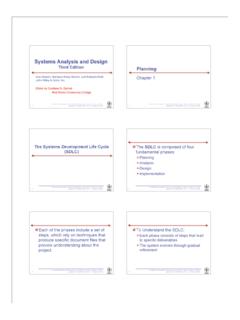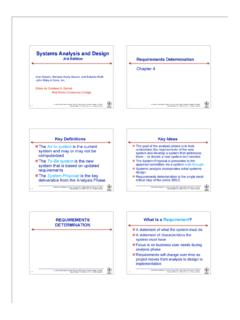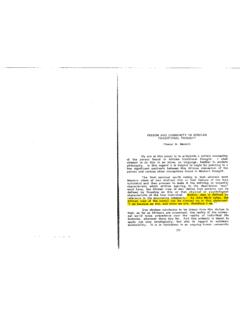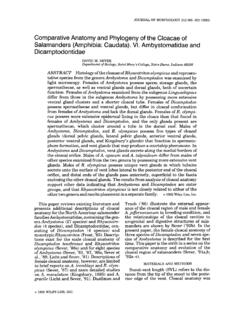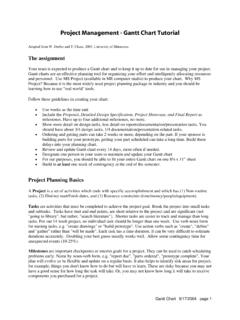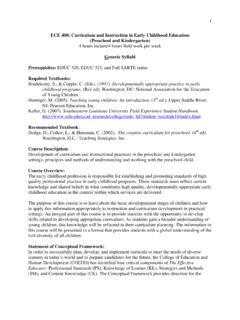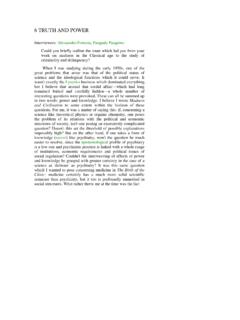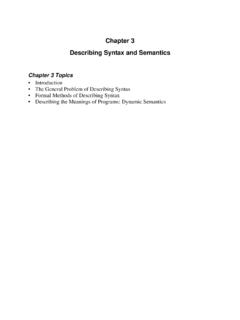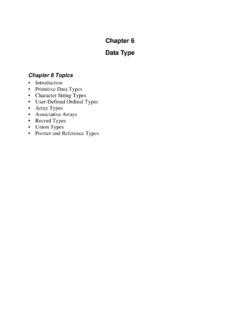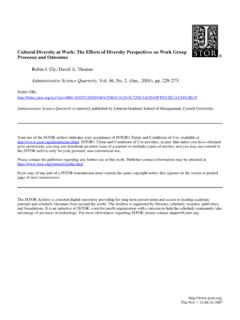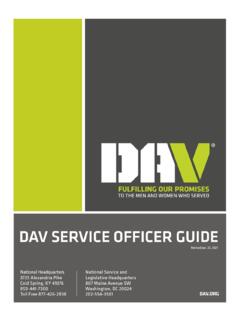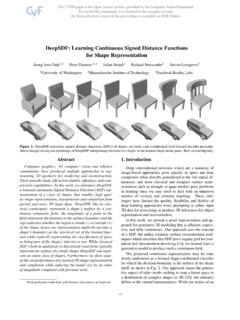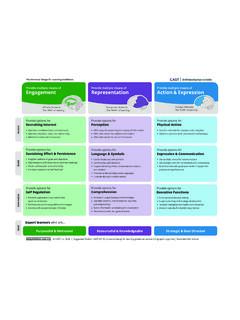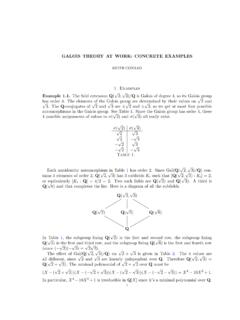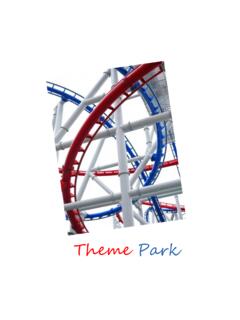Transcription of CHAPTER 2 Data Representation in Computer Systems
1 CHAPTER 2. Data Representation in Computer Systems Introduction 47. Positional Numbering Systems 48. Converting Between Bases 48. Converting Unsigned Whole Numbers 49. Converting Fractions 51. Converting between Power-of-Two Radices 54. Signed Integer Representation 54. Signed Magnitude 54. Complement Systems 60. Unsigned Versus Signed Numbers 66. Computers, Arithmetic, and Booth's Algorithm 66. Carry Versus Overflow 70. Binary Multiplication and Division Using Shifting 71. Floating-Point Representation 73. A Simple Model 74. Floating-Point Arithmetic 76. Floating-Point Errors 78. The IEEE-754 Floating-Point Standard 79. Range, Precision, and Accuracy 81. Additional Problems with Floating-Point Numbers 82. Character Codes 85.
2 Binary-Coded Decimal 86. EBCDIC 87. ASCII 88. Unicode 88. Error Detection and Correction 92. Cyclic Redundancy Check 92. Hamming Codes 95. Reed-Soloman 102. CHAPTER Summary 103. CMPS375 Class Notes (Chap02) Page 1 / 20 by Kuo-pao Yang Introduction 47. This CHAPTER describes the various ways in which computers can store and manipulate numbers and characters. Bit: The most basic unit of information in a digital Computer is called a bit, which is a contraction of binary digit. Byte: In 1964, the designers of the IBM System/360 main frame Computer established a convention of using groups of 8 bits as the basic unit of addressable Computer storage. They called this collection of 8 bits a byte. Word: Computer words consist of two or more adjacent bytes that are sometimes addressed and almost always are manipulated collectively.
3 The word size represents the data size that is handled most efficiently by a particular architecture. Words can be 16 bits, 32 bits, 64 bits. Nibbles: Eight-bit bytes can be divided into two 4-bit halves call nibbles. Positional Numbering Systems 48. Radix (or Base): The general idea behind positional numbering Systems is that a numeric value is represented through increasing powers of a radix (or base). System Radix Allowable Digits ---------------------------------------- ----------------------------- Decimal 10 0, 1, 2, 3, 4, 5, 6, 7, 8, 9. Binary 2 0, 1. Octal 8 0, 1, 2, 3, 4, 5, 6, 7. Hexadecimal 16 0, 1, 2, 3, 4, 5, 6, 7, 8, 9, A, B, C, D, E, F. TABLE Some Number to Remember EXAMPLE Three numbers represented as powers of a radix.
4 = 2 * 102 + 4 * 101 + 3 * 100 + 5 * 10-1 + 1 * 10-2. 2123 = 2 * 32 + 1 * 31 + 2 * 30 = 2310. CMPS375 Class Notes (Chap02) Page 2 / 20 by Kuo-pao Yang 101102 = 1 * 24 + 0 * 23 + 1 * 22 + 1 * 21 + 0 * 20 = 2210. Converting Between Bases 48. There are two important groups of number base conversions: 1. Conversion of decimal numbers to base-r numbers 2. Conversion of base-r numbers to decimal numbers Converting Unsigned Whole Numbers 49. EXAMPLE Convert 10410 to base 3 using the division-remainder method. 10410 = 102123. 3|104 2. 3| 34 1. 3| 11 2. 3| 3 0. 3|1 1. 0. EXAMPLE Convert 14710 to binary 14710 = 100100112. 2|147 1. 2| 73 1. 2|36 0. 2|18 0. 2|9 1. 2|4 0. 2|2 0. 2|1 1. 0. A binary number with N bits can represent unsigned integer from 0 to 2n 1.
5 Overflow: the result of an arithmetic operation is outside the range of allowable precision for the give number of bits. CMPS375 Class Notes (Chap02) Page 3 / 20 by Kuo-pao Yang Converting Fractions 51. EXAMPLE Convert to base 5. = EXAMPLE Convert to binary with 4 bits to the right of the binary point. Reading from top to bottom, = to four binary places. We simply discard (or truncate) our answer when the desired accuracy has been achieved. = X 2. X 2. X 2. X 2. EXAMPLE Convert 31214 to base 3. First, convert to decimal 31214 = 21710. Then convert to base 3 21710 = 220013. We have 31214 = 220013. Converting between Power-of-Two Radices 54. EXAMPLE Convert 1100100111012 to octal and hexadecimal. 110 010 011 1012 = 62358 Separate into groups of 3 for octal conversion 1100 1001 11012 = C9D16 Separate into groups of 4 for octal conversion CMPS375 Class Notes (Chap02) Page 4 / 20 by Kuo-pao Yang Signed Integer Representation 54.
6 By convention, a 1 in the high-order bit indicate a negative number. Signed Magnitude 54. A signed-magnitude number has a sign as its left-most bit (also referred to as the high-order bit or the most significant bit) while the remaining bits represent the magnitude (or absolute value) of the numeric value. N bits can represent (2n-1 - 1) to 2n-1 -1. EXAMPLE Add 010011112 to 001000112 using signed-magnitude arithmetic. 010011112 (79) + 001000112 (35) = 011100102 (114). There is no overflow in this example EXAMPLE Add 010011112 to 011000112 using signed-magnitude arithmetic. An overflow condition and the carry is discarded, resulting in an incorrect sum. We obtain the erroneous result of 010011112 (79) + 011000112 (99) = 01100102 (50).
7 EXAMPLE Subtract 010011112 from 011000112 using signed-magnitude arithmetic. We find 0110000112 (99) - 010011112 (79) = 000101002 (20). in signed-magnitude Representation . EXAMPLE EXAMPLE The signed magnitude has two representations for zero, 10000000 and 00000000. (and mathematically speaking, the simple shouldn't happen!). Complement Systems 60. One's Complement o This sort of bit-flipping is very simple to implement in Computer hardware. o EXAMPLE Express 2310 and -910 in 8-bit binary one's complement form. 2310 = + (000101112) = 000101112. -910 = - (000010012) = 111101102. o EXAMPLE o EXAMPLE The primary disadvantage of one's complement is that we still have two representations for zero: 00000000 and 11111111. CMPS375 Class Notes (Chap02) Page 5 / 20 by Kuo-pao Yang Two's Complement o Find the one's complement and add 1.
8 O EXAMPLE Express 2310, -2310, and -910 in 8-bit binary two's complement form. 2310 = + (000101112) = 000101112. -2310 = - (000101112) = 111010002 + 1 = 111010012. -910 = - (000010012) = 111101102 + 1 = 111101112. o EXAMPLE Add 910 to -2310 using two's complement arithmetic. 000010012 (910) + 111010012 (-2310) = 111100102 (-1410). 00001001 <= Carries 000010012 ( 9). + 111010012 +(-23). 111100102 (-14). o EXAMPLE Find the sum of 2310 and -910 in binary using two's complement arithmetic. 000101112 (2310) + 111101112 (-910) = 000011102 (1410). 11110111 <= Carries 000101112 ( 23). + 111101112 +(- 9). 000011102 ( 14). o A Simple Rule for Detecting an Overflow Condition: If the carry in the sign bit equals the carry out of the bit, no overflow has occurred.
9 If the carry into the sign bit is different from the carry out of the sign bit, over (and thus an error) has occurred. o EXAMPLE Find the sum of 12610 and 810 in binary using two's complement arithmetic. 011111102 (12610) + 000010002 (810) = 100001102 (-12210). 01111000 <= Carries 011111102 ( 126). + 000010002 +( 8). 100001102 (-122). A one is carried into the leftmost bit, but a zero is carried out. Because these carries are not equal, an overflow has occurred. CMPS375 Class Notes (Chap02) Page 6 / 20 by Kuo-pao Yang o N bits can represent (2n-1) to 2n-1 -1. With signed-magnitude number, for example, 4 bits allow us to represent the value -7 through +7. However using two's complement, we can represent the value -8 through +7.
10 Integer Multiplication and Division o For each digit in the multiplier, the multiplicand is shifted one bit to the left. When the multiplier is 1, the shifted multiplicand is added to a running sum of partial products. o EXAMPLE Find the product of 000001102 (610) and 000010112 (1110). 00000110 ( 6). x 00001011 (11). Multiplicand Partial Products 00000110 + 00000000 (1; add multiplicand and shift left). 00001100 + 00000110 (1; add multiplicand and shift left). 00011000 + 00010010 (0; Don't add, just shift multiplicand left). 00110000 + 00010010 (1; add multiplicand and shift left). = 01000010 (Product; 6 X 11 = 66). o When the divisor is much smaller than the dividend, we get a condition known as divide underflow, which the Computer sees as the equivalent of division by zero.
